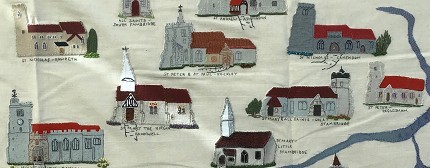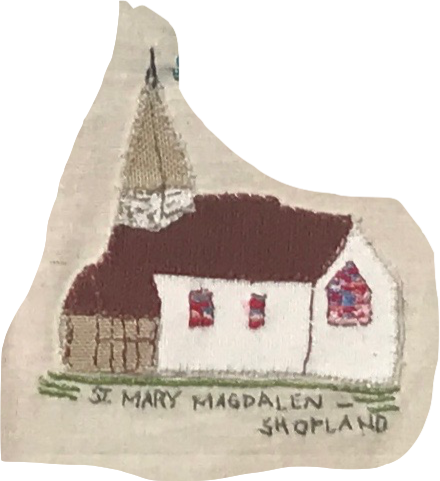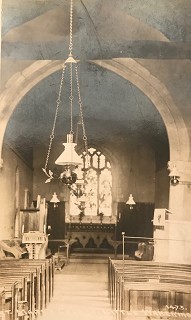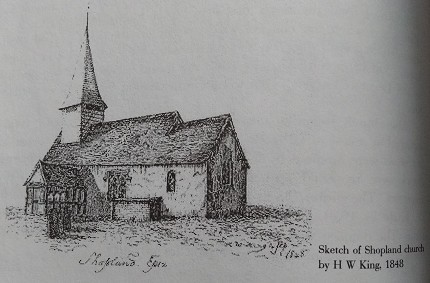The manors mentioned in the Domesday Book gradually morphed into parishes, each with their own parish church. These were usually built in the medieval period, which is why the dates of 1100 to 1500 have been chosen for this panel.

The panel shows 17 historic churches across the 14 modern parishes. Great and Little Stambridge were once separate parishes, so their churches are shown separately, as are those of Great and Little Wakering. No historic church is shown for Hullbridge because it was a parish which was late coming into existence, being carved out of Hockley in the 20th century. Shopland and Little Stambridge churches have been demolished but are shown as they appeared shortly before demolition. The churches at South Fambridge (now in Ashingdon parish) and Foulness Island are both Victorian, but they replaced older buildings which stood on the same sites. Havengore Island (now part of Foulness parish) was once, briefly, a separate parish, but there is no evidence that it ever had a church. The name ‘Barling Magna’ (which means ‘Great Barling’) suggests that there was once a ‘Barling Parva’ (Little Barling) parish, but there is no surviving evidence of a church for the latter, nor indeed much documentation about it.
The churches have been depicted as they are now (or as they were before they were demolished), but each one has changed in some way since it was originally built. Early churches were usually simple, rectangular structures which in many cases now survive as the nave of later, greatly enlarged and extended buildings, which have chancels, towers, aisles and vestries. Here is an example of an enlarged church structure.




The Church was historically the centre of every community. The church building is usually the oldest surviving building in most parishes across the country, not least because it was constructed of expensive stonework rather than cheaper timber.
All buildings shown are now Church of England, but were Catholic prior to Henry VIII’s break from Rome in 1534. Churches from other denominations came to the fore at a later time period.
Whilst some churches have specific construction dates recorded for their initial building (e.g. St. Andrews Ashingdon in 1020 and St. Peter & Paul in Hockley in 1220), putting dates to others is a challenge:
